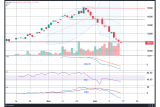
Soybean exports from the US are expected to be the dry bulk trade most affected by the US-China trade war. While a 90-day reprieve has been confirmed to allow for talks, with the US lowering tariffs to 30% and China to 10%, the end of this in mid-August falls just a month before the seasonal ramp up of US soybean exports. With uncertainty over the outcome of the temporary lowering of tariffs, Chinese buyers are likely to extend their shift to South American origins. Brazil, as the leading soybean producer, is the main candidate to gain greater market share on the back of the deterioration of Sino-American relations.
However, replacement by South American countries represents a clear reduction in tonne-mile demand. As the majority of US soybeans end up in China (52% in 2024), the trade commands the use of larger vessel sizes. In 2024, nearly 70% of US soybeans were shipped on Panamax and Kamsarmax vessels.
While Panama canal transits for Handysize and Supramax vessels carrying US grain cargoes have returned to a similar frequency to pre-drought levels, laden Kamsarmax transits have not recovered. Kamsarmax tonne-mile demand therefore has been supported by US-China soybean trade rerouted via the Cape of Good Hope (CoGH).
The shift of volumes to South America therefore negates this tonne-mile boost, with South Brazil to South China 4000 NM closer than the US Gulf to South China with both via the CoGH.
However, Brazil experiences more volatility in port congestion, which could partly compensate for the shorter distance. If we use the difference between the vessel arrival date at anchorage of the loading port and the date sailed as the turnaround time, Brazil is not only consistently above the US, but also experiences times of very high congestion. Vessels stuck in the queue are tied up for longer, effectively reducing the available supply.

In 2024, the turnaround time for soy (beans and meal) shipments ex-Brazil averaged 14 days. Adding this to a South Brazil to South China voyage brings the voyage time to around 50 days, still less than a usual US to China voyage at 56 days.
However, in 2023, Brazil’s turnaround time averaged 20 days, and peaked at 37 days in December of that year pressured by a drought and very strong exports. In comparison, even amid logistical issues caused by drought that also impact barging efficiency along the Mississippi, US monthly turnaround time averages have only peaked at 11 days in recent years.
Brazil relies on barging and trucking to transport cargoes to port, which at times of very strong production and drought, can place additional strain on export logistics. Brazil also lacks storage infrastructure, shipping the vast majority of its soybeans in the first half of the year. The country’s beans are less suitable for storage than their US equivalent due to a higher moisture content, contributing to the need to ship volumes quickly after harvest. Increased volumes of the country’s already vast soybean production will place greater strain on throughput capacity. The beginning of the country’s corn and sugar exports later in the year also places additional pressure on export infrastructure.
This season, despite strong demand from Chinese crushers, Brazilian soybean shipments have had a slow start to exports due to delays in the harvest. An expected record harvest, with the IGC forecasting a 15 Mt y-o-y increase to 167.5 Mt in 2024/25 production, will therefore need to be shipped in a reduced time and ahead of the corn and sugar peak season in order to avoid additional pressure on infrastructure. Kamsarmax owners are, thus, keeping a keen eye on the potential for high Brazilian port congestion once again.
By Cara Hatton, Dry Bulk Analyst, Research, SSY.
Articles
You may also be
interested in
View allGet in touch
Contact us today to find out how our expert team can support your business















